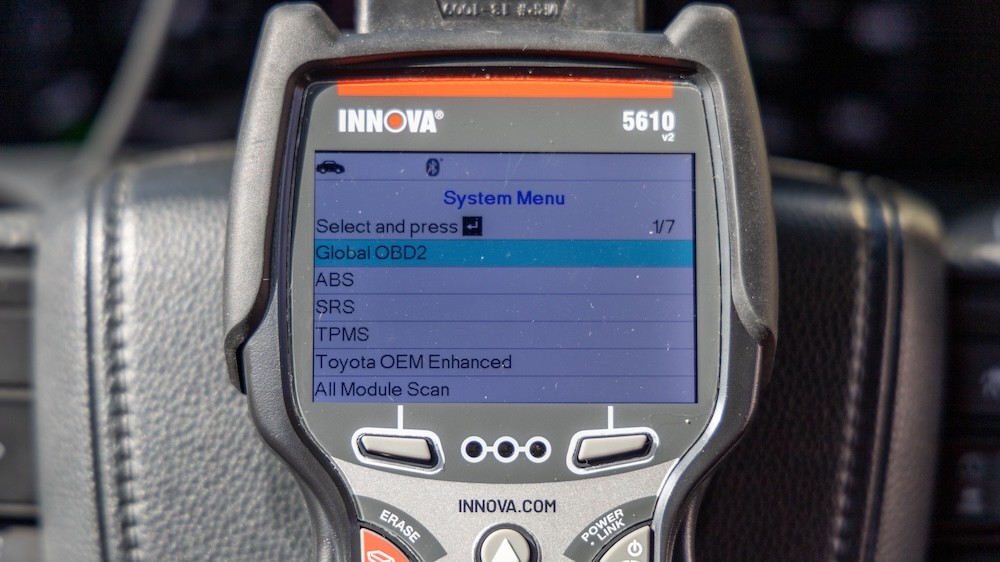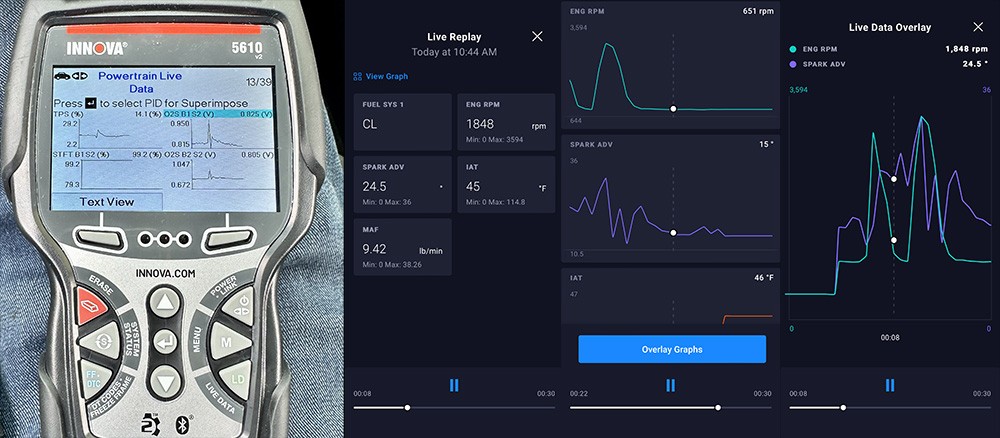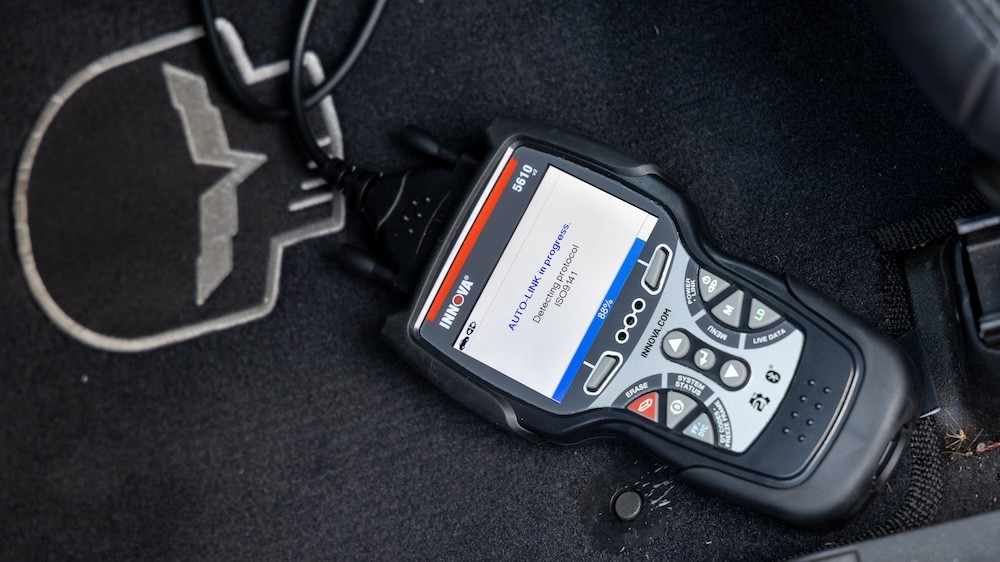For owners of a 2003 Ford F-150, understanding your vehicle’s diagnostic systems is crucial for maintenance and repair. A common question that arises is: does a 2003 Ford F-150 have OBD2? The answer is a definitive yes. Since On-Board Diagnostics II (OBD2) became mandatory for all cars and light trucks sold in the United States starting in 1996, your 2003 Ford F-150 is equipped with this standardized system. This means you have access to a wealth of diagnostic information right at your fingertips, empowering you to understand your truck’s health and address issues effectively.
Understanding OBD2 and Your 2003 Ford F-150
OBD2 is a standardized system that allows you to access the self-diagnostic capabilities of your vehicle’s computer. Think of it as a universal translator for your truck, providing codes and data that can be interpreted by mechanics and DIYers alike. This standardization is key – it means any OBD2 scanner will be compatible with your 2003 Ford F-150’s diagnostic port, regardless of the scanner’s brand or features.
The implementation of OBD2 was driven by the need for better emissions control and to provide technicians with more comprehensive diagnostic information. For 2003 Ford F-150 owners, this translates to easier identification of problems, from a simple check engine light to more complex engine or transmission issues.
Locating the OBD2 Port
The OBD2 port, also known as the Data Link Connector (DLC), is typically located inside the cabin of your 2003 Ford F-150. You can usually find it under the dashboard on the driver’s side. It’s often near the steering column or in the vicinity of the pedals. Consulting your owner’s manual can provide the exact location if you’re having trouble finding it. This port is your gateway to accessing the diagnostic data from your truck’s computer.
 OBD2 port location in a vehicle dashboard
OBD2 port location in a vehicle dashboard
Why OBD2 Matters for Your 2003 Ford F-150
Having OBD2 capability in your 2003 Ford F-150 offers several significant advantages:
Check Engine Light Diagnostics: The most common reason to use an OBD2 scanner is to decipher the check engine light. When this light illuminates, it signifies that your truck’s computer has detected an issue. An OBD2 scanner can retrieve the Diagnostic Trouble Code (DTC) associated with the light, giving you a starting point for diagnosis. Instead of driving to a mechanic immediately with just a lit dashboard light, you can get a code and understand the potential problem yourself.
Emissions Testing: OBD2 systems are crucial for emissions testing. The system monitors various components related to your vehicle’s emissions control. During a smog check, technicians will often use an OBD2 scanner to ensure your 2003 Ford F-150 is within acceptable emissions standards. The “I/M Monitor Status” function on many OBD2 scanners allows you to check if your vehicle is ready for emissions testing before you even go to the testing station, potentially saving you time and a failed test.
DIY Car Repair and Maintenance: For owners who prefer to handle some of their vehicle maintenance and repairs, OBD2 is an invaluable tool. It allows you to:
- Read trouble codes: Understand what’s wrong with your truck before taking it to a mechanic or attempting repairs yourself.
- Clear codes: After performing a repair, you can clear the trouble codes and turn off the check engine light (ensure the issue is actually resolved).
- Monitor live data: Advanced scanners can display real-time data from your engine and other systems, such as engine temperature, RPM, O2 sensor readings, and more. This live data is incredibly helpful for diagnosing intermittent issues or monitoring system performance.
Choosing the Right OBD2 Scanner for Your 2003 Ford F-150
With the knowledge that your 2003 Ford F-150 has OBD2, the next step is considering an OBD2 scanner. The market offers a wide range of scanners, from basic code readers to advanced bidirectional scan tools. The best choice for you depends on your needs and how deep you want to delve into vehicle diagnostics.
Basic OBD2 Code Readers: These are the simplest and most affordable scanners. They primarily read and clear trouble codes. For many 2003 Ford F-150 owners, a basic code reader is sufficient for dealing with common check engine light issues.
Enhanced OBD2 Scanners: Stepping up from basic readers, enhanced scanners offer features like:
- Live data streaming: View real-time data from various sensors and systems.
- ABS and SRS code reading: Access diagnostic codes beyond just the engine and emissions systems, including anti-lock brakes and airbags.
- Freeze frame data: Capture data snapshots from when a trouble code was triggered, providing more context for diagnosis.
Professional-Grade Bidirectional Scan Tools: For the serious DIYer or those wanting dealership-level functionality, bidirectional scan tools are the top tier. These scanners, like the Innova 5610, offer advanced features such as:
- Bidirectional control: Actively command vehicle systems to perform tests, like turning on/off fuel pumps or cycling ABS valves.
- System resets and relearns: Perform procedures like throttle body relearns, ABS bleeding, and service light resets.
- All-system diagnostics: Scan every module in your 2003 Ford F-150’s network, including transmission, HVAC, and more.
While a tool like the Innova 5610 might offer more features than a typical 2003 Ford F-150 owner initially needs, the added capabilities can be beneficial for comprehensive diagnostics and more complex repairs as your truck ages.
 Innova 5610 OBD2 Scanner displaying live data
Innova 5610 OBD2 Scanner displaying live data
Compatibility is Key
Regardless of the scanner type you choose, ensure it is OBD2 compatible. Since OBD2 is a standard, almost all scanners on the market today will work with your 2003 Ford F-150. However, if you are considering a more advanced scanner and want to utilize specific features like bidirectional control or system resets, it’s always wise to check the scanner’s vehicle coverage. While the Innova 5610, for example, boasts broad compatibility, features can be vehicle-dependent.
How to Use an OBD2 Scanner on Your 2003 Ford F-150: Basic Steps
Using an OBD2 scanner on your 2003 Ford F-150 is generally straightforward:
- Locate the OBD2 port: As mentioned earlier, it’s usually under the dashboard on the driver’s side.
- Turn the ignition to “Key On, Engine Off” (KOEO): Insert your key and turn it to the position just before starting the engine. This powers up the vehicle’s computer systems.
- Plug in the scanner: Connect the OBD2 scanner to the port.
- Power on the scanner: Most scanners will power on automatically once connected or have a power button.
- Follow the scanner’s prompts: The scanner will typically guide you through a menu. Select options like “Read Codes” or “Diagnostic Trouble Codes” to retrieve any stored codes.
- Interpret the codes: The scanner will display codes, usually in a format like “P0171” (example). You’ll need to look up these codes to understand their meaning. Many scanners have built-in code definitions, or you can use online resources or repair apps.
- Clear codes (optional and with caution): Once you’ve addressed the issue, you can usually select an option like “Erase Codes” to clear the trouble codes and turn off the check engine light. Only clear codes after you are confident the problem is resolved. Clearing codes without fixing the underlying issue will only result in the light coming back on.
 Hands using Innova 5610 OBD2 scanner connected to vehicle port
Hands using Innova 5610 OBD2 scanner connected to vehicle port
Conclusion
Yes, your 2003 Ford F-150 is equipped with OBD2, making it compatible with a wide range of diagnostic scanners. Understanding and utilizing your truck’s OBD2 system is a smart move for any owner. Whether you’re simply curious about a check engine light or want to perform more in-depth diagnostics for DIY repairs, an OBD2 scanner is an essential tool. By investing in the right scanner and learning how to use it, you can take better care of your 2003 Ford F-150, save money on diagnostics, and gain a deeper understanding of your vehicle’s inner workings. Consider exploring the features of different OBD2 scanners to find one that suits your needs and empowers you to keep your Ford F-150 running smoothly for years to come.